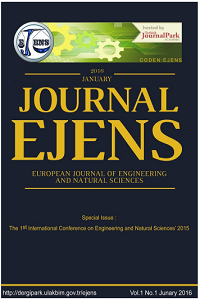Solar Radiation Modeling with Adaptive Approach
Solar Radiation Modeling with Adaptive Approach
___
- [1]. K. Benmouiza and A. Cheknane, “Forecasting hourly global solar radiation using hybrid k-means and nonlinear autoregressive neural network models,” Energy Convers. Manag., vol. 75, pp. 561–569, Nov. 2013.
- [2]. J. R. Trapero, N. Kourentzes, and A. Martin, “Short-term solar irradiation forecasting based on Dynamic Harmonic Regression,” Energy, vol. 84, pp. 289–295, May 2015.
- [3]. Y. Kashyap, A. Bansal, and A. K. Sao, “Solar radiation forecasting with multiple parameters neural networks,” Renew. Sustain. Energy Rev., vol. 49, pp. 825–835, Sep. 2015.
- [4]. Y. Gala, Á. Fernández, J. Díaz, and J. R. Dorronsoro, “Hybrid machine learning forecasting of solar radiation values,” Neurocomputing, vol. 176, pp. 48–59, May 2015.
- [5]. M. Ghayekhloo, M. Ghofrani, M. B. Menhaj, and R. Azimi, “A novel clustering approach for short-term solar radiation forecasting,” Sol. Energy, vol. 122, pp. 1371–1383, Dec. 2015.
- [6]. L. Mazorra Aguiar, B. Pereira, M. David, F. Díaz, and P. Lauret, “Use of satellite data to improve solar radiation forecasting with Bayesian Artificial Neural Networks,” Sol. Energy, vol. 122, pp. 1309–1324, Dec. 2015.
- [7]. F. O. Hocaoğlu, Ö. N. Gerek, and M. Kurban, “Hourly solar radiation forecasting using optimal coefficient 2-D linear filters and feed-forward neural networks,” Sol. Energy, vol. 82, no. 8, pp. 714–726, Aug. 2008.
- [8]. E. Akarslan, F. O. Hocaoğlu, and R. Edizkan, “A novel M-D (multi-dimensional) linear prediction filter approach for hourly solar radiation forecasting,” Energy, vol. 73, pp. 978–986, Aug. 2014.
- [9]. E. Akarslan and F. O. Hocaoglu, “A novel adaptive approach for hourly solar radiation forecasting,” Renew. Energy, vol. 87, pp. 628–633, Mar. 2016.
- [10]. R. G. Allen, “Environmental, and E. Water Resources Institute,” Task Comm. Stand. Ref. ASCE Stand. Ref. evapotranspiration equation. Reston, Va. Am. Soc. Civ. Eng., 2005.
- [11]. N. Z. Al-Rawahi, Y. H. Zurigat, and N. A. Al-Azri, “Prediction of hourly solar radiation on horizontal and inclined surfaces for Muscat/Oman,” J. Eng. Res., vol. 8, no. 2, pp. 19–31, 2011.
- [12]. P. T. Nastos, A. G. Paliatsos, K. V. Koukouletsos, I. K. Larissi, and K. P. Moustris, “Artificial neural networks modeling for forecasting the maximum daily total precipitation at Athens, Greece,” Atmos. Res., vol. 144, pp. 141–150, Jul. 2014.
- [13]. K. P. Moustris, I. C. Ziomas, and A. G. Paliatsos, “3-Day-Ahead Forecasting of Regional Pollution Index for the Pollutants NO2, CO, SO2, and O3 Using Artificial Neural Networks in Athens, Greece,” Water, Air, Soil Pollut., vol. 209, no. 1–4, pp. 29–43, Aug. 2009.
- Başlangıç: 2015
- Yayıncı: CNR Çevre
Numerical Investigation of Hot Ultrasonic Assisted Turning of Titanium Alloy
Ekrem KANDEMIR, Numan Sabit CETİN, Selim BOREKCİ
Determination of Appropriate Distribution Functions for the Wind Speed Data Using the R Language
MATLAB GUI Model for PV System Feasibility of a House Electricity Consumption in Turkey
Kübra Nur Akpınar, Ayşe Ceyda BİLÜ, Bedri KEKEZOĞLU
Macro and Micro Modeling of the Unreinforced Masonry Shear Walls
Sedat Komurcu, Abdullah Gedikli
Toygun Dağdevir, Orhan Keklikcioglu, Veysel Ozceyhan
Influence of Different Si Levels on Mechanical Properties of Aluminium Casting Alloys
Influence of Pouring Temperature on The Formation of Spheroidal and Lamellar Graphite In Cast Iron
Sinan Melih Nigdeli, Gebrail Bekdaş, Aikerim Aydın
Effects of SiO2/Water Nanofluid Flow in a Square Cross-Sectioned Curved Duct
